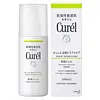What's inside
What's inside
 Key Ingredients
Key Ingredients

No key ingredients
 Benefits
Benefits

 Concerns
Concerns

 Ingredients Side-by-side
Ingredients Side-by-side

Water
Skin ConditioningGlycerin
HumectantCaprylyl/Capryl Glucoside
CleansingLauryl Glucoside
CleansingLauryl Betaine
CleansingPropanediol
SolventDisodium Cocoyl Glutamate
CleansingXanthan Gum
EmulsifyingCitric Acid
BufferingParfum
MaskingSodium Methyl Cocoyl Taurate
CleansingPotassium Cocoyl Glycinate
1,2-Hexanediol
Skin ConditioningSodium Chloride
MaskingDisodium EDTA
Ethylhexylglycerin
Skin ConditioningHydrolyzed Hyaluronic Acid
HumectantArginine
MaskingAspartic Acid
MaskingGlutamic Acid
HumectantTetrasodium EDTA
Tocopherol
AntioxidantUndaria Pinnatifida Extract
Skin ConditioningWater, Glycerin, Caprylyl/Capryl Glucoside, Lauryl Glucoside, Lauryl Betaine, Propanediol, Disodium Cocoyl Glutamate, Xanthan Gum, Citric Acid, Parfum, Sodium Methyl Cocoyl Taurate, Potassium Cocoyl Glycinate, 1,2-Hexanediol, Sodium Chloride, Disodium EDTA, Ethylhexylglycerin, Hydrolyzed Hyaluronic Acid, Arginine, Aspartic Acid, Glutamic Acid, Tetrasodium EDTA, Tocopherol, Undaria Pinnatifida Extract
Water
Skin ConditioningGlycerin
HumectantButylene Glycol
HumectantDimethicone
EmollientCetyl-Pg Hydroxyethyl Palmitamide
Skin ConditioningSodium Methyl Stearoyl Taurate
CleansingAllantoin
Skin ConditioningAcrylates/C10-30 Alkyl Acrylate Crosspolymer
Emulsion StabilisingHydroxypropyl Methylcellulose
Emulsion StabilisingHydroxyundecanoic Acid
Skin ConditioningArginine
MaskingZinc Oxide
Cosmetic ColorantEucalyptus Globulus Leaf Extract
PerfumingBis-Methoxypropylamido Isodocosane
EmollientMethylparaben
PreservativeWater, Glycerin, Butylene Glycol, Dimethicone, Cetyl-Pg Hydroxyethyl Palmitamide, Sodium Methyl Stearoyl Taurate, Allantoin, Acrylates/C10-30 Alkyl Acrylate Crosspolymer, Hydroxypropyl Methylcellulose, Hydroxyundecanoic Acid, Arginine, Zinc Oxide, Eucalyptus Globulus Leaf Extract, Bis-Methoxypropylamido Isodocosane, Methylparaben
 Reviews
Reviews

Ingredients Explained
These ingredients are found in both products.
Ingredients higher up in an ingredient list are typically present in a larger amount.
Arginine is an amino acid that is important for human development. Your body uses is it to produce hair keratin and skin collagen.
As a cosmetic ingredient, Arginine has antioxidant properties and can also help repair damaged skin. This ingredient is derived either synthetically or from animals.
Arginine isn't fungal acne safe when used in the presence of other lipids (fats, fatty acids, oils, esters, etc). Oils and fats occur naturally within the skin, so take caution when using Arginine if you're prone to fungal acne.
Learn more about ArginineGlycerin is already naturally found in your skin. It helps moisturize and protect your skin.
A study from 2016 found glycerin to be more effective as a humectant than AHAs and hyaluronic acid.
As a humectant, it helps the skin stay hydrated by pulling moisture to your skin. The low molecular weight of glycerin allows it to pull moisture into the deeper layers of your skin.
Hydrated skin improves your skin barrier; Your skin barrier helps protect against irritants and bacteria.
Glycerin has also been found to have antimicrobial and antiviral properties. Due to these properties, glycerin is often used in wound and burn treatments.
In cosmetics, glycerin is usually derived from plants such as soybean or palm. However, it can also be sourced from animals, such as tallow or animal fat.
This ingredient is organic, colorless, odorless, and non-toxic.
Glycerin is the name for this ingredient in American English. British English uses Glycerol/Glycerine.
Learn more about GlycerinWater. It's the most common cosmetic ingredient of all. You'll usually see it at the top of ingredient lists, meaning that it makes up the largest part of the product.
So why is it so popular? Water most often acts as a solvent - this means that it helps dissolve other ingredients into the formulation.
You'll also recognize water as that liquid we all need to stay alive. If you see this, drink a glass of water. Stay hydrated!
Learn more about Water